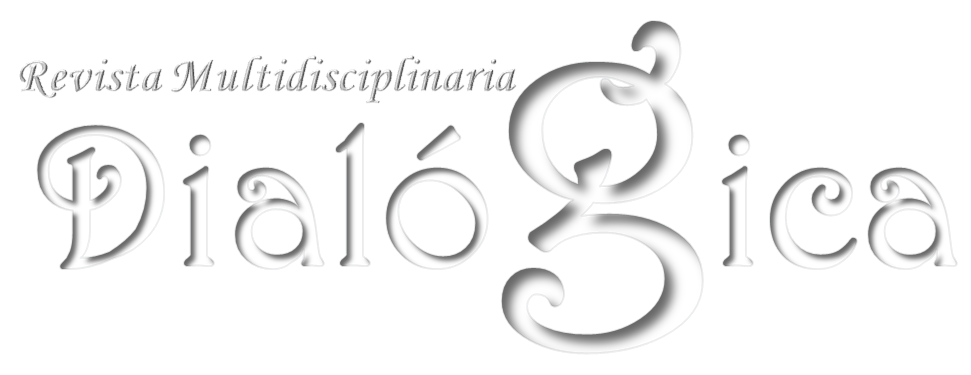SOCIETY 5.0 AS A SOURCE OF OWN THOUGHT IN THE TUTORIAL RELATIONSHIP: AN IMMERSION FROM THE ERA OF HYPERCONNECTIVITY AND ARTIFICIAL INTELLIGENCE.
DOI:
https://doi.org/10.56219/dialgica.v21i4.3307Keywords:
Tutorial relationship, society 5.0, artificial intelligence, critical thinking, hyper connectivityAbstract
Society 5.0, represented by the convergence of technology and society, presents a complex scenario where Artificial Intelligence (AI), although it offers powerful tools, also introduces complexities such as information overload and algorithmic personalization. In this context, the role of the tutor evolves towards that of a guide who encourages critical thinking and creativity. By collaborating with the tutor, and having AI as a co-creative agent, problem-solving and original thinking skills can be developed. However, it is essential to establish a solid ethical framework to ensure responsible use of this type of technology. Ultimately, the goal is to cultivate self-thinking that allows individuals to make the most of the opportunities offered by the digital age.
References
Ávila, C. y Covarrubias, J. (2018). Hiperconectividad y desarrollo de competencias digitales en los estudios de posgrado. Revista Observatorio. https://www.researchgate.net/publication/326749100_HIPERCONECTIVIDAD_Y_DESARROLLO_DE_COMPETENCIAS_DIGITALES_EN_LOS_ESTUDIOS_DE_POSGRADO.
Corvera, M. (2019). Sociedad 5.0: produciendo una sociedad de la abundancia. Biblioteca del Congreso Nacional, Departamento de Estudios, Extensión y Publicaciones.
Hernández, A. (2021). La persona hiperconectada: reflexiones desde el desarrollo humano, enfoque centrado en la persona. Revista Comunicación. 30(2), 46-59. https://www.scielo.sa.cr/pdf/com/v30n2/1659-3820-com-30-02-46.pdf DOI: https://doi.org/10.18845/rc.v30i2-2021.6030
Merino, E. (2023). La era pedagógica de la ia. Aula de Encuentro. 26(1), pp. 1-3. DOI: https://doi.org/10.17561/ae.v26n1.8930
Ortega, A. (2019). Sociedad 5.0: el concepto japonés para una sociedad superinteligente. Real Instituto Elcano. https://media.realinstitutoelcano.org/wp-content/uploads/2021/11/ari10-2019-ortega-sociedad-5-0-concepto-japones-sociedad-superinteligente.pdf
Pariser, E. (2017). El filtro burbuja: cómo la red decide lo que leemos y lo que pensamos. Taurus.
Rama, C. (2023). Disrupción digital universidad 4.0 e inteligencia artificial. UDUALC.
Reed, S. Y De Freitas, N. (2019). Learning what to ask: Guiding a generative model with a sequence of questions. In Advances in neural information processing systems. 2679-2689.
Siegel, J. (2023). El arte del prompt: Cómo sacar el máximo provecho de la ia generativa. https://news.microsoft.com/source/latam/features/ia/el-arte-del-prompt-como-sacar-el-maximo-provecho-de-la-ia-generativa/
Touretzky, D., Gardner-McCune, C., Martin, F. y Seehorn, D. (2019). Envisioning ai for k-12: what should every child know about ai?. Proceedings of the AAAI Conference on Artificial Intelligence. 33(01), 9795-9799. https://doi.org/10.1609/aaai.v33i01.33019795. DOI: https://doi.org/10.1609/aaai.v33i01.33019795
Zellers, R. y Nogueira, R. (2019). Language models are few-shot learners. In Advances in neural information processing systems. 7007-7019.
Downloads
Published
How to Cite
Issue
Section
License
Copyright (c) 2024 Cristina Alejandra Rojas, José Vicente Cordero

This work is licensed under a Creative Commons Attribution-NonCommercial-ShareAlike 4.0 International License.


 @revistadialogica
@revistadialogica DialogicaUPEL
DialogicaUPEL RevistaDialogicaUPELMaracay
RevistaDialogicaUPELMaracay dialógicaupel@gmail.com
dialógicaupel@gmail.com dialogicaupel.blogspot.com
dialogicaupel.blogspot.com https://issuu.com/dialogicaupel
https://issuu.com/dialogicaupel https://revistas.upel.edu.ve/index.php/dialogica/
https://revistas.upel.edu.ve/index.php/dialogica/









